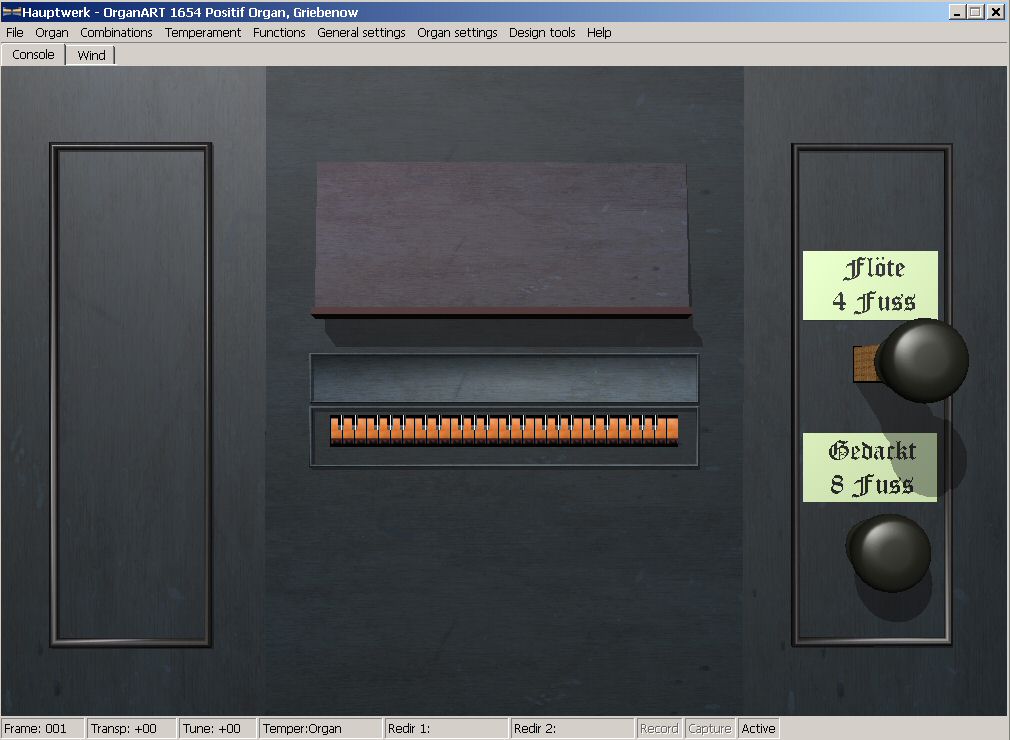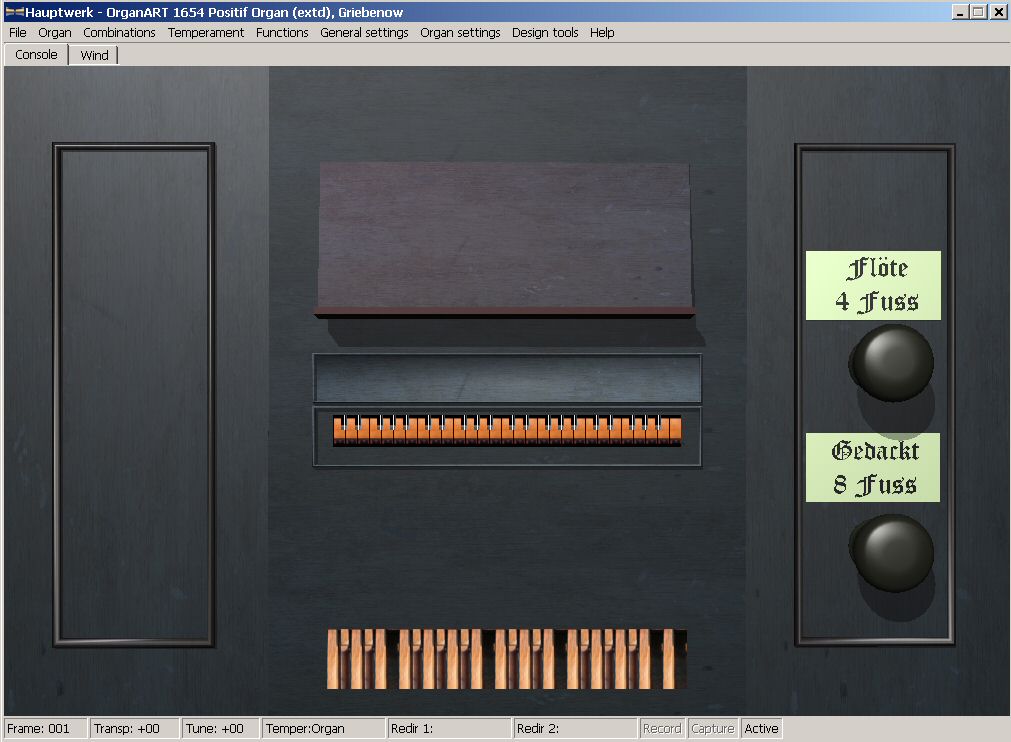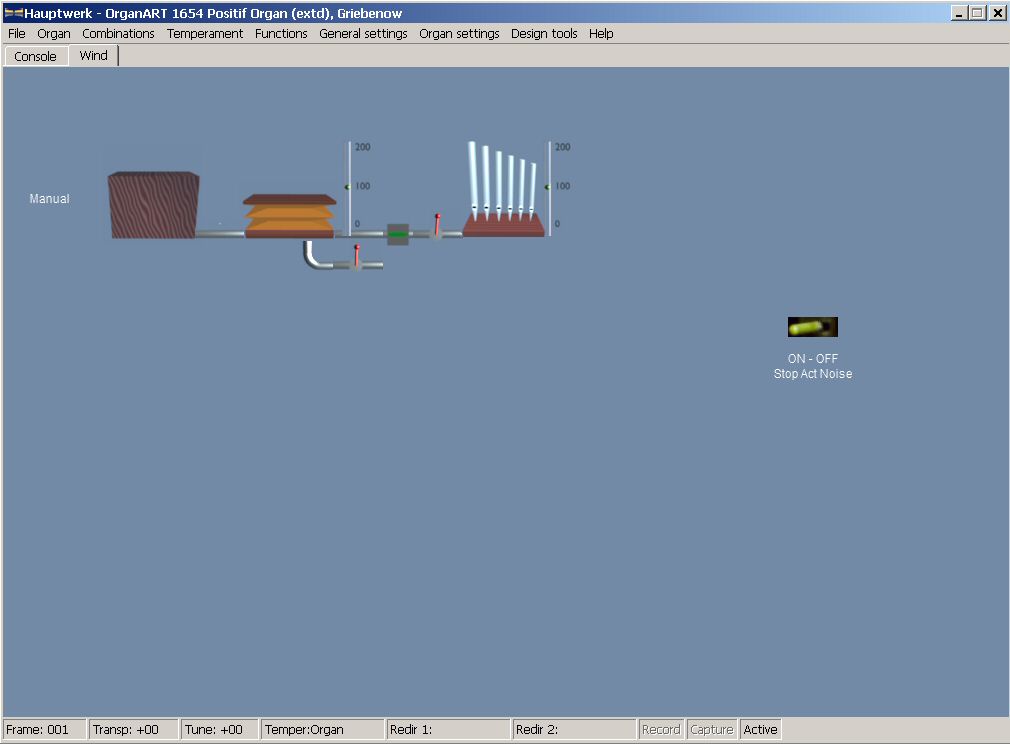1654 Positif Organ
Chapel of Griebenow Castle/Mecklenburg-Vorpommern, Germany
Short Introduction and History
This instrument, built by an unknown Swedish organ builder, is one of the oldest organs of this type that still exists in Germany. It is located in a small manor chapel built for Gerdt Anthon von Keffenbrink between 1648-1654 and belonging to the Griebenow castle estate near Greifswald. The chapel was restored in 1949 and 1988.
There are records of Griebenow dating back to 1248, and it has links to Eldena monastery. The estate was temporarily under Swedish administration ("Schwedisch-Vorpommern"). The Griebenow chapel is unique with its fifteen-cornered layout. The castle, chapel and grounds together form an impressive document of Germano-Swedish culture.
The Positif has a small wind blower operated by the feet, and a 4' flute stop with a sound of singular beauty, rather similar in character to that of an old Renaissance instrument.
Unfortunately, its tuning was changed during 19th century, whilst the manual keys (short octave) were extended so that music of that period could be played.
The organ is now in urgent need of further restoration due to severe woodworm problems in parts of the organ, hence the instrument has been restored virtually, showing how the organ should sound after restoration.
The church room has semi-dry acoustics of about 2 seconds of reverberation.
See Location in Googlemaps
Recording technique
The organ was recorded an processed in July 2002 with 44 kHz, 16-bit, for Hauptwerk 1 and completely reprocessed for HW3/4 in December 2010. Multi-releases for short and medium key attacks were reconstructed by architectural modelling, multi-loops were added.
Thanks
I would like to thank the parish of Griebenow for supporting this project. Special thanks to organist Dr. Markus Funck, Stralsund for contacts and local assistance.
Virtual Console
Specification
Manual compass: C - c3
Pedal compass C - c1 (extd. version only)
Temperature: Mean-tone, 4th comma at a1=440 Hz
Stop List
Note: The original instrument has no stop naming
1) Gedackt 8
2) Flöte 4
Requirements
Loaded Version |
Memory Requirements 2) |
Processor Speed |
|
16-bit, compressed1) |
290 MB |
≥ 250 MHz SingleCore 2) |
1) Lossless compression (no loss of sound quality!)
To load this organ into Hauptwerk you will need enough free memory in your computer, due to the amount of playable stops, not including the operating system or any other programs that may be running!
We recommend a professional audio card (e.g. RME-Series) and a studio headphone (e.g. AKG Reference Headphone K701, K712) for optimal sound and room impression.
Demos
The following demo pieces were recorded with the Hauptwerk software and the virtual organ sample set, with no additional effects processing.
Jan Pieterson Sweelinck (1562-1621)
Toccata in A (transposed to C)
Registration: Flöte 4' (8va bassa)
Georg Muffat (1653-1704)
Toccata I
Registration: Gedackt 8' + Flöte 4', Pedal attached
J. S. Bach (1685-1750)
Pastorale, Teil 1, BWV 590
Registration: Gedackt 8', Flöte 4', Pedal attached
Numerous other live recordings can be found on the ConcertHall Website
(Advanced Search, Organ: OAM - Positif unknown (Griebenow)
© OrganArt Media, all rights reserved
No demo sounds may be used or transmitted in any form for public purposes without the prior permission of the publisher!
Informations and Weblinks
CD Productions:
Historische Orgeln in Vorpommern (double CD):
Martin Rost, Peter von Dijk, Wim Diepenhorst, Wouter van Belle und Cor van Wageningen spielen Werke von Buxtehude, Bach, Mozart, Schumann, Rheinberger u.a.
Gespielt an den Orgeln von: Stralsund, Griebenow, Gingst, Patzig, Greifswald, Zettemin, Saal, Kenz, Barth
Available from:
Förderverein "Sankt Marien" e.V. Stralsund
Marienstraße 10
D-18439 Stralsund or check www.stellwagen.de.
The author takes no responsibility for the contents of linked pages!










